Understanding efficiency ratings and performance capabilities is essential when evaluating your heating options. This will help you manage energy consumption, reduce utility bills, and minimize your carbon footprint.
It will also help you make an informed decision about which option suits your specific heating needs.
Whether you’re considering a cozy gas fireplace for ambiance or a powerful furnace to keep your home warm, this comparison on gas fireplace efficiency vs furnace will provide valuable insights to help you make the right choice.
Understanding Efficiency in Heating Systems
Understanding efficiency in heating systems is crucial when seeking optimal comfort and cost-effectiveness.
Defining Efficiency
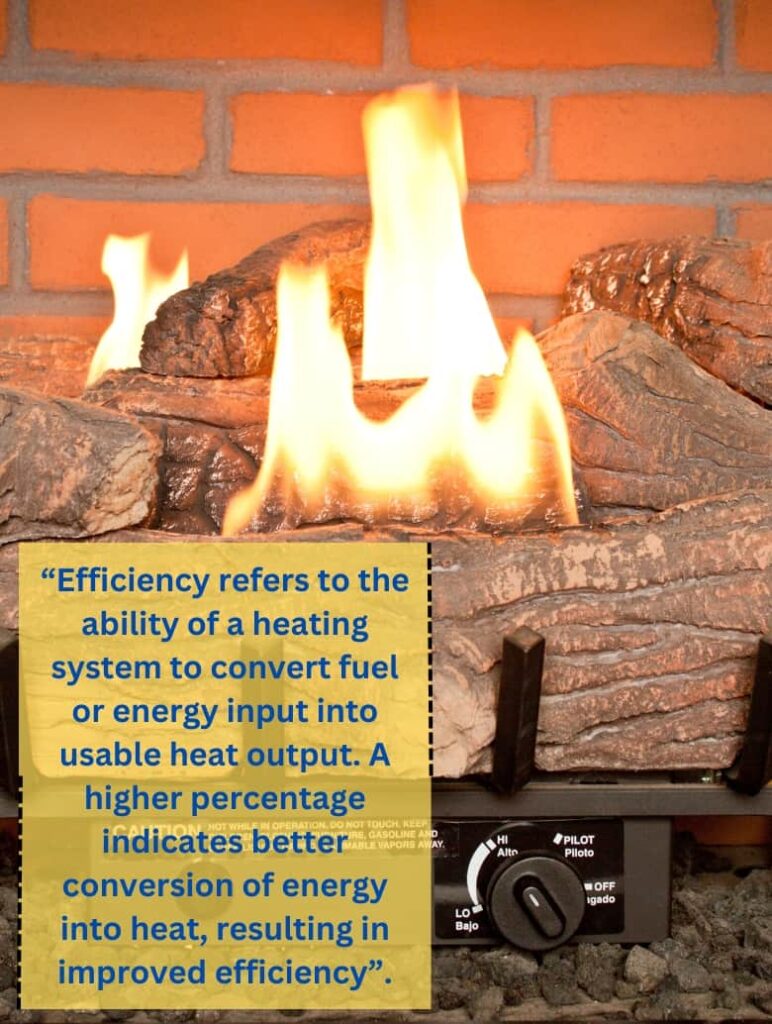
Efficiency refers to a heating system’s ability to convert fuel or energy input into usable heat output. A higher percentage indicates better conversion of energy into heat, resulting in improved efficiency.
Factors Contributing to Heating Efficiency
Several factors influence the efficiency of gas fireplaces and furnaces. By understanding these factors, you can evaluate the efficiency of each option and make an informed decision. The most common factors include:
- Combustion Efficiency
- Heat Transfer Efficiency
- Insulation and Air Leakage
- System Sizing and Zoning
- Maintenance and Upkeep
——
Do You Need to Hire Chimney & Fireplace Expert?
Get free quotes from qualified experts near you. No commitment required!
——
Measuring Efficiency
To make informed decisions based on reliable data, it is important to understand how efficiency is measured, the key metrics used, and how ratings are determined. Efficiency in heating systems is measured using various metrics and ratings, including:
BTU (British Thermal Units)
BTU is a common measurement used to quantify a system’s heating or cooling capacity over one hour. It represents the heat required to raise the temperature of one pound of water by one degree Fahrenheit. For instance, a gas fireplace with a BTU/hr rating of 20,000 BTU/hr can generate 20,000 BTUs of heat output per hour.
AFUE (Annual Fuel Utilization Efficiency)
AFUE is a measure used to determine the percentage/quantity of fuel your furnace efficiently converts fuel into heat. A furnace with an AFUE of 90 converts 90% of its fuel into usable heat while wasting the 10% into air leaks and other factors. Furnaces with higher AFUE are classified as highly efficient.
EER (Energy Efficiency Ratio)
EER measures the efficiency of heating and cooling systems, such as air conditioners or heat pumps. It represents the ratio of the cooling capacity (in BTU/hr) to the electrical energy consumed (in watt-hours) under specific operating conditions.
SEER (Seasonal Energy Efficiency Ratio)
Lastly, SEER represents the total cooling output (in BTU/hr) divided by the total electrical energy consumed (in watt-hours) over a cooling season. SEER ratings consider the varying operating conditions throughout the cooling season and provide a standardized efficiency measure.
Understanding these measurements is crucial when evaluating the performance and efficiency of heating, cooling, and energy systems. Knowing how to interpret them will help you maximize your energy-saving investments.
Gas Furnace Efficiency
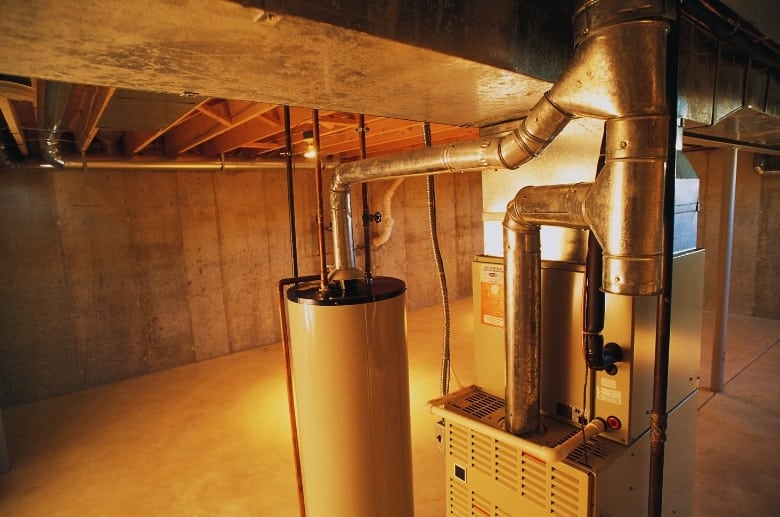
Gas furnaces operate by burning natural gas or propane to produce heat. The combustion process occurs within the furnace, and the generated heat is distributed throughout the home via a ventilation system.
A thermostat controls the furnace’s operation, maintaining the desired temperature by adjusting the burner’s intensity and blower fan speed. Furnaces have three recognized efficiency ratings: low, standard, and high.
- Low-Efficiency: Low-efficiency furnaces typically have an Annual Fuel Utilization Efficiency (AFUE) rating between 56% and 70%.
- Standard Efficiency/ Mid Efficiency: Standard-efficiency furnaces have an AFUE rating between 80% and 83%.
- High-Efficiency: High-efficiency furnaces boast AFUE ratings of 90% or higher.
Factors Affecting the Efficiency of Gas Furnaces
Several factors can impact the efficiency of gas furnaces. Understanding these factors is essential when evaluating the efficiency of a specific furnace:
1. Type of Furnace
Gas furnaces come in different types, including single-stage, two-stage, and modulating furnaces. Single-stage furnaces have only one operating stage, which runs at full capacity whenever turned on. This makes them less efficient due to their constant high output and limited control over heat production.
Two-stage furnaces offer two output stages, typically high and low. This means they can operate at different capacities depending on the heating requirements, making them more efficient than single-stage.
Modulating furnaces are the most advanced and the most efficient type of furnaces. These furnaces have advanced sensors and control systems that continuously monitor the indoor temperature and adjust the heat output accordingly.
2. Age and Condition
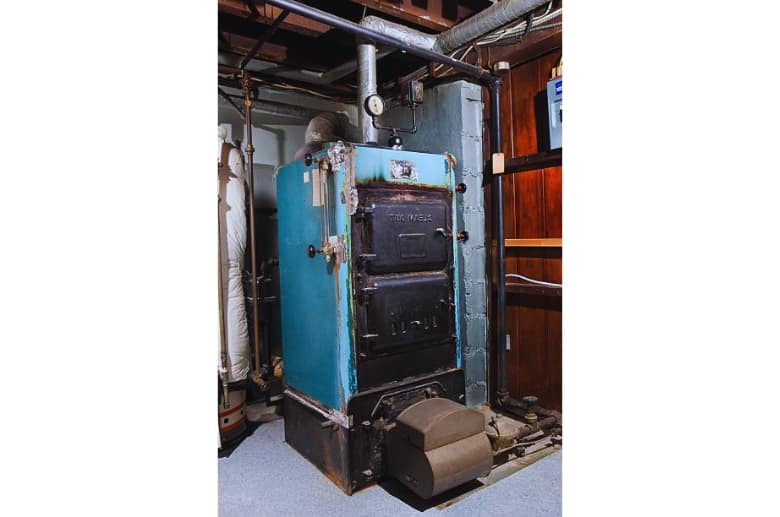
Older furnaces have lower efficiency ratings than newer, more technologically advanced models. Additionally, due to wear and tear, the components of an older furnace might have deteriorated and become less efficient over time, hindering the furnace from operating at its optimal efficiency.
3. Size of the Furnace
An oversized furnace may short-cycle or turn on and off frequently, leading to energy waste. On the other hand, an undersized furnace might overwork to heat the space adequately.
Generally, you will need 30 BTUs for every square foot of your house. For example, if you have a 1,500-square-foot house, you will require a furnace with a 45,000 BTU output.
4. Fuel Type
The fuel the furnace uses also affects its efficiency. Natural gas is an efficient and environmentally friendly option, while oil furnaces are not as efficient and require regular maintenance to keep them running well.
5. Maintenance and Cleaning
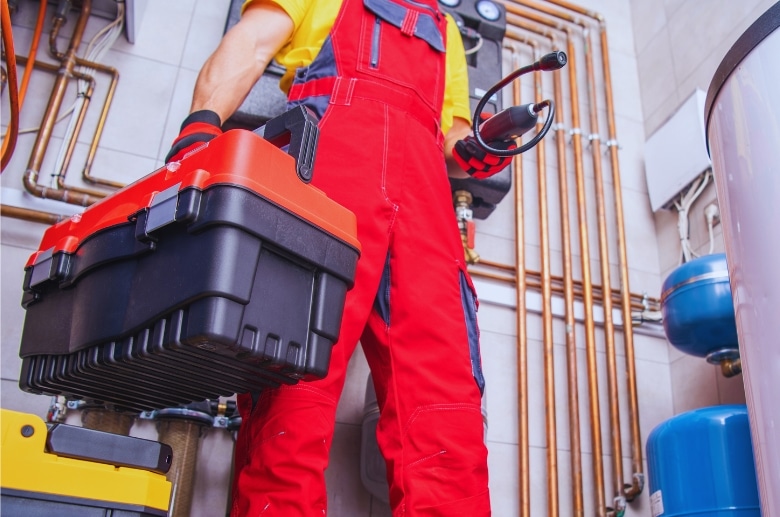
Regular maintenance, including furnace cleaning or replacing air filters, inspecting and cleaning the burner, and ensuring proper ventilation, is vital for maintaining efficiency. A well-maintained furnace operates at peak performance and consumes less energy.
——
Do You Need to Hire Chimney & Fireplace Expert?
Get free quotes from qualified experts near you. No commitment required!
——
Comparison of the Efficiency of Gas Furnaces to Other Heating Options
When comparing the efficiency of gas furnaces to other heating options, you must consider multiple factors, including specific heating needs, fuel availability, and cost considerations.
Gas Furnace vs Electric Heat Pumps
Electric heat pumps are known for their high efficiency and versatility. However, they may be less suitable in extremely cold climates or areas with high electricity costs. Natural gas furnaces are the better choice since natural gas is often more cost-effective and can provide reliable and efficient heating even in colder climates.
Gas Furnace vs Geothermal Heat Pump
Geothermal heat pump systems also offer excellent efficiency and long-term energy savings. However, they have higher upfront installation costs and may require specific conditions for proper installation. This is unlike gas furnaces which generally have lower upfront costs and more flexible installation options.
Gas Furnace Pros and Cons
What makes a gas furnace worth it – or not? Here are some points to ponder:
Pros
- Efficient and effective for whole-house heating, providing consistent warmth
- Can handle larger spaces and colder climates effectively
- Reliable and widely used heating solution
Cons
- Lack the visual appeal and ambiance of a gas fireplace
- Initial installation costs can be higher compared to other heating options
- Requires regular maintenance and filter replacements
Gas Fireplace Efficiency
Gas fireplaces are an attractive and convenient home heating option that provides warmth and ambiance. They burn natural gas or propane to produce heat and simulate the look of a traditional wood-burning fireplace. Gas fireplaces also offer a controlled and convenient heating solution, allowing homeowners to enjoy the warmth and ambiance without the need to chop wood or clean ash.
Types of Gas Fireplaces
Below is a list of the most common gas fireplaces:
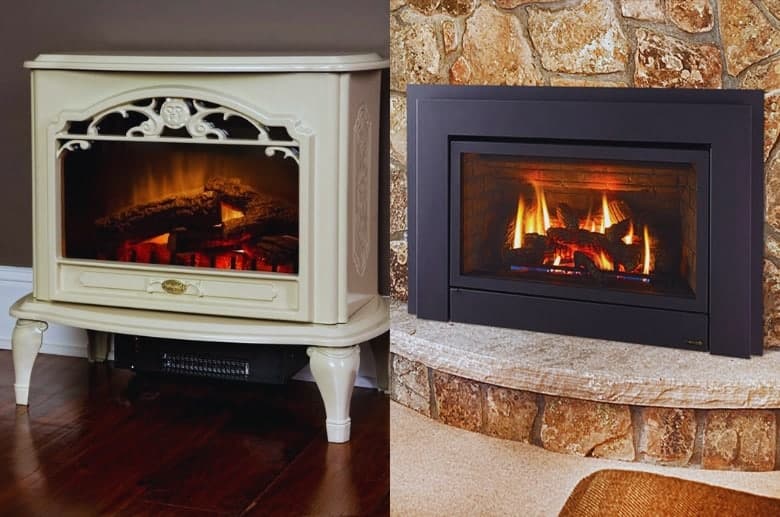
- Direct Vent Gas Fireplaces: Direct vent fireplaces have a sealed combustion system, drawing air for combustion from outside the home and venting the exhaust gasses outside. They are considered the safest and most efficient option, as they eliminate the risk of indoor air quality issues and minimize heat loss.
- Ventless Gas Fireplaces: Ventless fireplaces unlike vented ones do not require a chimney or external venting system. Instead, they use a catalytic converter or oxygen depletion sensor to ensure safe combustion and release the combustion byproducts into the room. However, some areas regulate or prohibit ventless fireplaces due to safety concerns and potential air quality issues.
- Gas Fireplace Inserts: Inserts are designed to be installed within an existing wood-burning fireplace, converting it into a gas fireplace. They offer improved efficiency and heat output compared to traditional wood-burning fireplaces.
Understanding and Interpreting Efficiency Ratings for Gas Fireplaces
Ventless gas fireplaces offer the highest AFUE ratings, up to 99%. They operate without a chimney or external venting system, allowing all the heat generated to stay within the room.
Direct-vent gas fireplaces come second, with AFUE ratings ranging from 80% to 85%. Gas fireplace inserts have the lowest AFUE rating, at 70%, but they are highly reliable compared to their counterparts.
Factors That Affect the Efficiency of Gas Fireplaces
Like furnaces, several factors can impact the efficiency of gas fireplaces. Below is a list of the most common ones:
1. Venting
Direct vent gas fireplaces have a sealed combustion system, drawing in outside air for combustion and venting the exhaust gasses outside as well. This design minimizes heat loss and ensures efficient combustion.
Conversely, ventless gas fireplaces operate without external venting, releasing the combustion byproducts directly into the room. While ventless fireplaces offer high efficiency ratings, they may contribute to indoor air quality concerns and require careful monitoring.
2. Heat Distribution Methods
Some gas fireplaces utilize blowers or fans to circulate warm air, ensuring better heat distribution and more efficient heating. Understanding the optimal gas fireplace usage duration is crucial in this context, as it ensures that the system is not overworked while maintaining efficient heat transfer.
Heat distribution methods such as convection, radiation, or a combination of both can impact the fireplace’s efficiency by effectively transferring heat to the surrounding space.
3. Flame Adjustment
You can fine-tune the heat generated by adjusting the flame based on your comfort needs and heating requirements. Optimal flame adjustment helps avoid unnecessary energy consumption and maximizes efficiency.
4. Location
Ideally, the fireplace should be positioned centrally where heat can radiate effectively and evenly throughout the space. Placing furniture or obstructions that block the heat flow can hinder the fireplace’s efficiency and prevent heat from reaching desired areas.
5. Maintenance and Cleaning
Dust, debris, or soot build-up can obstruct the burner and affect combustion, leading to decreased efficiency. Cleaning the fireplace components, including the burner, vents, and pilot light, helps maintain optimal performance and efficiency
Comparison of the Efficiency of Gas Fireplace to Other Heating Options
When considering heating options, the efficiency of a gas fireplace can make a significant difference. Let’s explore how gas fireplaces stack up against other heating alternatives.
Gas Fireplace vs Electric Space Heaters
Electric space heaters convert electrical energy directly into heat, while gas fireplaces utilize natural gas or propane combustion, which can be a more efficient energy source.
Gas fireplaces also provide direct radiant heat, heating up objects and people in close proximity efficiently. In contrast, electric space heaters primarily rely on convection to heat the air, which can be less efficient in terms of warming a specific area.
Gas Fireplaces vs Open Wood-Burning Fireplaces
Wood-burning fireplaces are known for their poor energy efficiency, as a significant portion of the heat produced is lost through the chimney. In contrast, gas fireplaces are designed for efficiency, with features such as sealed combustion chambers and adjustable heat output. Additionally, gas fireplaces provide better control over the amount of heat produced compared to wood-burning fireplaces.
Gas Fireplace Pros and Cons
Here are some good reasons why you might want a gas fireplace (or not):
Pros
- Aesthetically pleasing and can enhance the visual appeal of a space.
- Convenient and easy to use, with instant heat at the flip of a switch
- Some models offer high-efficiency ratings, providing cost-effective heating
Cons
- Limited heating capacity, not ideal for whole-house heating
- It may not be suitable for extremely cold climates or larger spaces
Gas Fireplace vs Furnace Efficiency Comparison
Now let’s look at an in-depth comparison of gas fireplace efficiency vs furnace to help you decide which heating solution suits you best.
1. Efficiency
Gas furnaces can convert a higher percentage of the fuel’s potential heat into usable warmth for the home, typically around 90-98% efficiency. They are designed to efficiently distribute heat throughout the entire house, making them ideal for larger spaces or colder climates.
On the other hand, gas fireplaces are more suitable for smaller areas or specific rooms where targeted heating is desired. They have an efficiency rating of 70-85% and usually prioritize aesthetics and ambiance over heat distribution.
The choice between a gas fireplace and a furnace depends on the size of the area to be heated and the climate of the geographical location. Furnaces are more efficient for whole-house heating in colder climates, while gas fireplaces offer localized heating and ambiance in smaller spaces or milder climates.
2. Cost
To determine cost, we’ll examine operating, maintenance, and installation rates. Based on average usage, a gas fireplace typically costs around $0.49 per hour, $27.44 per week (running for 8 hours a day), $109.76 per month, and $1,317.12 per year to operate.
It will cost you around $2,500 to $10,000 to install, but this will depend on the type of gas fireplace and the complexity of the installation. You’ll also part ways with about $80 to $145 per year for its maintenance.
On the other hand, a gas furnace will cost an average of $1 per hour, $56 per week (running for 8 hours a day), $224 per month, and $2,688 per year, based on average usage.
The installation cost of a gas furnace will range from $700 to $13,000, and its maintenance will cost around $100 to $200 per year.
Although a gas furnace has higher operational, installation, and maintenance costs, it compensates for those costs with high efficiency and performance.
3. Maintenance
Gas fireplaces require annual maintenance to ensure optimal performance and extend their lifespan, which typically ranges from 10 to 15 years. Routine tasks for gas fireplace maintenance include:
- Addressing issues with the pilot light or ignition system
- Repairing gas leaks or faulty gas valves
- Addressing burner or flame problems
- Ensuring proper venting and chimney functionality.
Gas furnaces have a lifespan of about 20 to 30 years, and they require regular maintenance to ensure optimal performance and efficiency. Routine maintenance tasks for gas furnaces include:
- Inspecting and cleaning the furnace
- Checking and replacing air filters
- Lubricating moving parts
- Verifying the operation of safety controls
While gas fireplaces may require less frequent maintenance compared to gas furnaces, both systems still require attention to ensure their longevity and optimal performance.
Qualified professionals should conduct annual maintenance for gas fireplaces and regular maintenance for gas furnaces to address any potential issues, maximize energy efficiency, and ensure the safety of the occupants.
——
Do You Need to Hire Chimney & Fireplace Expert?
Get free quotes from qualified experts near you. No commitment required!
——
4. Environmental Impact
Gas fireplaces generally emit lower carbon dioxide (CO2) levels during combustion than gas furnaces. This is because gas fireplaces typically have smaller burners and are primarily designed for decorative purposes and supplemental heating rather than whole-house heating.
However, it’s important to note that gas fireplaces can still emit carbon monoxide (CO), nitrogen oxides (NOx), and particulate matter, although the levels are generally lower than those of gas furnaces.
Gas furnaces, which are usually the main heating source for a home or building, tend to release higher levels of carbon dioxide (CO2) during their combustion process than gas fireplaces.
Along with carbon dioxide, gas furnaces can also emit carbon monoxide, nitrogen oxides (NOx), and sulfur dioxide (SO2) during the combustion process. These emissions can have negative environmental impacts and contribute to air pollution.
While gas fireplaces generally have lower emissions than gas furnaces, proper maintenance must be prioritized. Both systems’ environmental impact must also be considered to ensure efficient and environmentally responsible heating.
5. Aesthetics and Comfort
Gas fireplaces are known for their high visual appeal and can serve as a focal point in a room. Their dancing flames and realistic logs provide a cozy and inviting ambiance.
However, gas furnaces are usually hidden in the household’s infrastructure, such as the basement, utility room, or dedicated furnace closet. They are not designed with aesthetics in mind, as their primary function is to provide efficient heating throughout the entire home.
Gas fireplaces provide high visual appeal and a cozy ambiance with direct radiant heat, unlike a gas furnace, which is built for performance. Nevertheless, the choice between gas fireplaces and gas furnaces in terms of aesthetics and comfort depends on personal preferences, desired ambiance, and the need for whole-house heating.
6. Home Resale Value
A gas fireplace gives a property a luxurious and upscale look, which can enhance its overall appeal. It also adds a touch of elegance and comfort to a living space, which is a major selling factor to most potential buyers.
On the other hand, gas furnaces contribute to a home’s resale value primarily through their higher energy efficiency. A gas furnace with a high energy efficiency rating can make a home more attractive to potential buyers.
Gas Fireplace Efficiency vs Furnace Comparison
That said, here’s a summary comparison of gas fireplace efficiency vs furnace.
| Feature | Gas Fireplace | Gas Furnace |
| Efficiency | Average efficiency of up to 70-85% AFUE. | Average efficiency of up to 90%-98% AFUE. |
| Cost | Low operating, installation, and maintenance costs. | High operating, installation, and maintenance costs. |
| Maintenance | Require annual maintenance to ensure optimal performance Lifespan 10 to 15 years. | They emit high levels of carbon dioxide (CO2), carbon monoxide, nitrogen oxides (NOx), and sulfur dioxide (SO2) during the combustion process. |
| Environmental Impact | Emit low carbon dioxide (CO2) levels during the combustion process, carbon monoxide (CO), nitrogen oxides (NOx), and particulate matter. | High visual appeal. Provide direct radiant heat. |
| Aesthetics and Comfort | Concealed within the home’s infrastructure. Provide distributed forced air heat. | Concealed within the home’s infrastructure.Provide distributed forced air heat. |
| Home Resale Value | Gives a luxurious look to a home, thus increasing value. | Higher energy efficiency, increasing the overall home value. |
Conclusion
Gas furnaces are more efficient than gas fireplaces. Their AFUE ratings range from 90% to 98%, while gas fireplaces have AFUE ratings from 70% to 85%.
Additionally, gas furnaces provide distributed forced-air heat, ensuring consistent warmth throughout the house and making them more suitable for larger spaces.
When choosing between a gas fireplace and a gas furnace, consider your specific needs and priorities. Assess the size of the area you need to heat, the climate of your location, and your aesthetic preferences.
If unsure, contact a professional to assist you with the selection.






